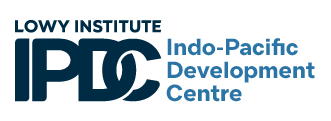Industrial policies such as the US Inflation Reduction Act or China’s Made in China 2025 policy are examples of a new suite of economic policies governments are deploying around the world. These policies are used to reshape economic activities in pursuit of various public policy objectives. Given industrial policies are explicitly designed to preference domestic economic actors over foreign ones, this bias distorts international trade and investment, which underpin the broader economic relations between countries.
China has used industrial policy extensively, supporting domestic production of electric vehicles (EV), semiconductors and shipbuilding for more than a decade. This culminated in the Made in China 2025 policy – which has the stated goal of self-sufficiency in ten strategic manufacturing sectors, defined as domestically producing 70 per cent of total value-add. And it is these same policies that are contributing to China’s exceptional trade tensions with Western countries.
The United States, initially slower, has also introduced a flurry of industrial policies. This includes the Inflation Reduction Act (IRA), the CHIPS and Science Act and the Infrastructure Investment and Jobs Act. The European Union is also playing catch-up, introducing its own new industrial policy legislative packages in critical minerals and advanced and green technology sectors.
Without internalising the international impacts of policy decisions, key trading partners – particularly developing countries – risk being largely sidelined. This could lead to growing economic competition and be counterproductive for cooperation in other areas such as climate change.
The IRA, a historic investment policy of approximately US$370 billion in climate and energy sectors using targeted subsidies, is a prime example. IRA consumer subsidies contain content eligibility requirements that seemingly undercut European car makers in the growing EV market in the United States. The initial response was a fierce rebuke by European leaders, however a last-minute workaround averted a full-blown trade dispute.
This episode demonstrates how the unilateralism of US industrial policy was unexpectedly damaging to cross-Atlantic economic relations. Worse still, key architects appear not to have considered the potential impacts on allied country economic interests.
If the EU’s economic interests can be threatened by ill-designed industrial policy, developing country partners are at even greater risk. There remain substantive critiques and questions about the efficacy of industrial policy – but this has not stopped their rapid adoption by governments. It is widely assumed developing countries will be increasingly disadvantaged because all these policies prioritise domestic (or free-trade agreement (FTA) partner) production and firms. Constrained profitability for infant and emerging sectors in developing economies that cannot access comparable state support is certainly possible.
Southeast Asia is one of the most exposed developing regions to this new wave of industrial policy in the world’s major economies. The region’s continued export-led development will involve emerging green and advanced technology supply chains as the global economy continues to reduce carbon emissions and adopt digital innovations. China is Southeast Asia’s largest trading and development finance partner. The United States and the European Union are its other major export markets. And it is these three mega-economies that will be at the centre of these new emerging industries and also engaging in the most intensive industrial policy programs.
Southeast Asian governments are already wary of this, with seven out of the eleven ASEAN nations voicing collective interest in leveraging IRA incentives to catalyse their own green technology industries. Initial optimism that the Indo-Pacific Economic Framework, if recognised as a quasi-FTA, would provide access to IRA subsidies for Southeast Asia has not materialised however. Singapore is currently the only Southeast Asian country that has signed an FTA with the United States.
Burgeoning EV supply chains in Southeast Asia do not appear to be acutely exposed to US industrial policy – but the same cannot be said for China’s industrial policies. China, Japan and South Korea held a steady 99 per cent of EV exports coming from East Asia since 2017. China’s share rapidly expanded to 50 per cent, crowding out Japan and South Korea and likely limited Southeast Asia’s ability to meaningfully enter the export market. Furthermore, Southeast Asian countries lost EV battery export shares in 2023, potentially linked to EV industrial policies in China and, to a lesser extent, Japan kicking into gear. Industrial policies in the United States may not be stifling nascent Southeast Asian EV supply chains, but China and Japan appear to be.
It is not all bad news. The scale of global industrial policy subsidies is driving demand for nickel and EV component supply chains. China has been a key partner in the development and expansion of Indonesia’s critical mineral processing and EV component manufacturing. Malaysia also seems to be a major beneficiary of shifting investments in the semiconductor sector. But fears about ever-expanding export controls and investment restrictions from the United States and its allies hang over the viability of the sector in the region.
In both these cases, domestic industrial policies also play an important role. China’s hand was forced by Indonesia’s nickel export ban and Malaysia has courted the semiconductor industry with favourable tax policies for decades. The interaction between industrial policy programs of the major economies and domestic ones in the region obfuscates the net impact of this new wave of industrial policies.
What is clear though is the need for sober analysis of industrial policy design and their impacts on third-party economies. Industrial policy is here to stay, and so are its repercussions. Precision and forethought will go a long way to shaping its transformative effects towards more equitable economic relations and stable long-term objectives.


